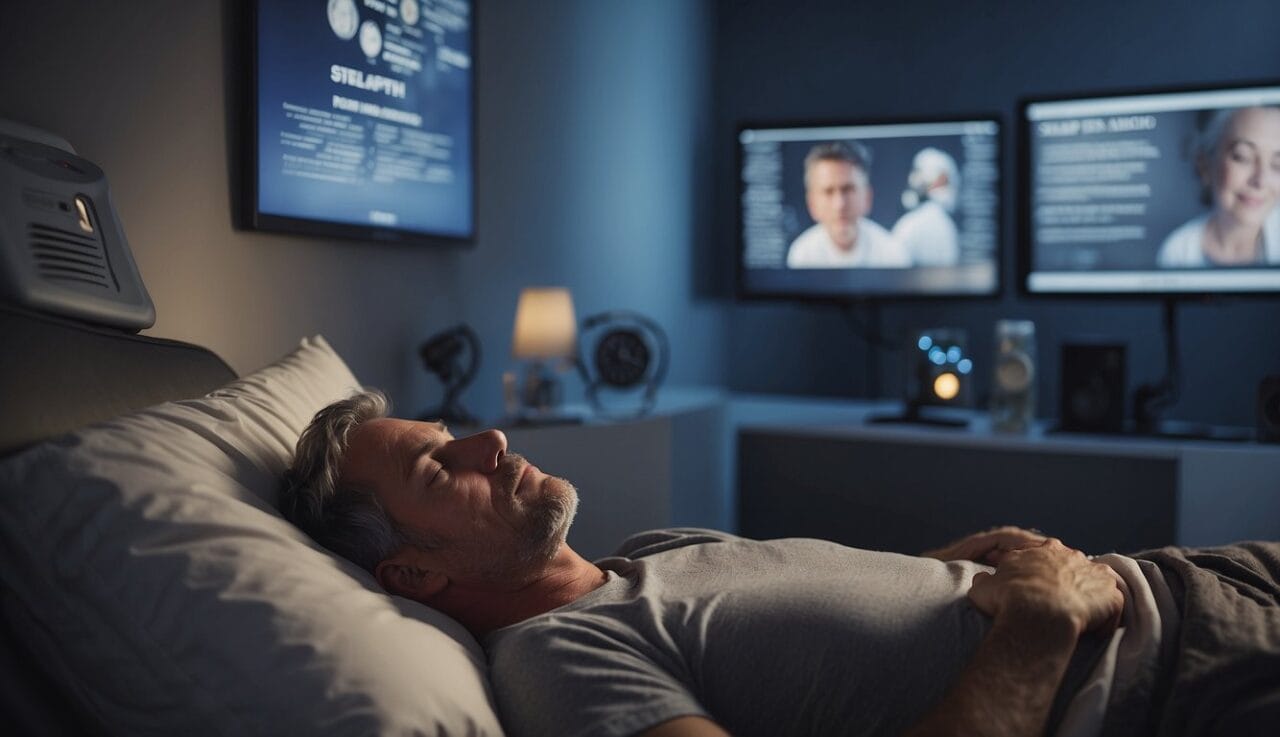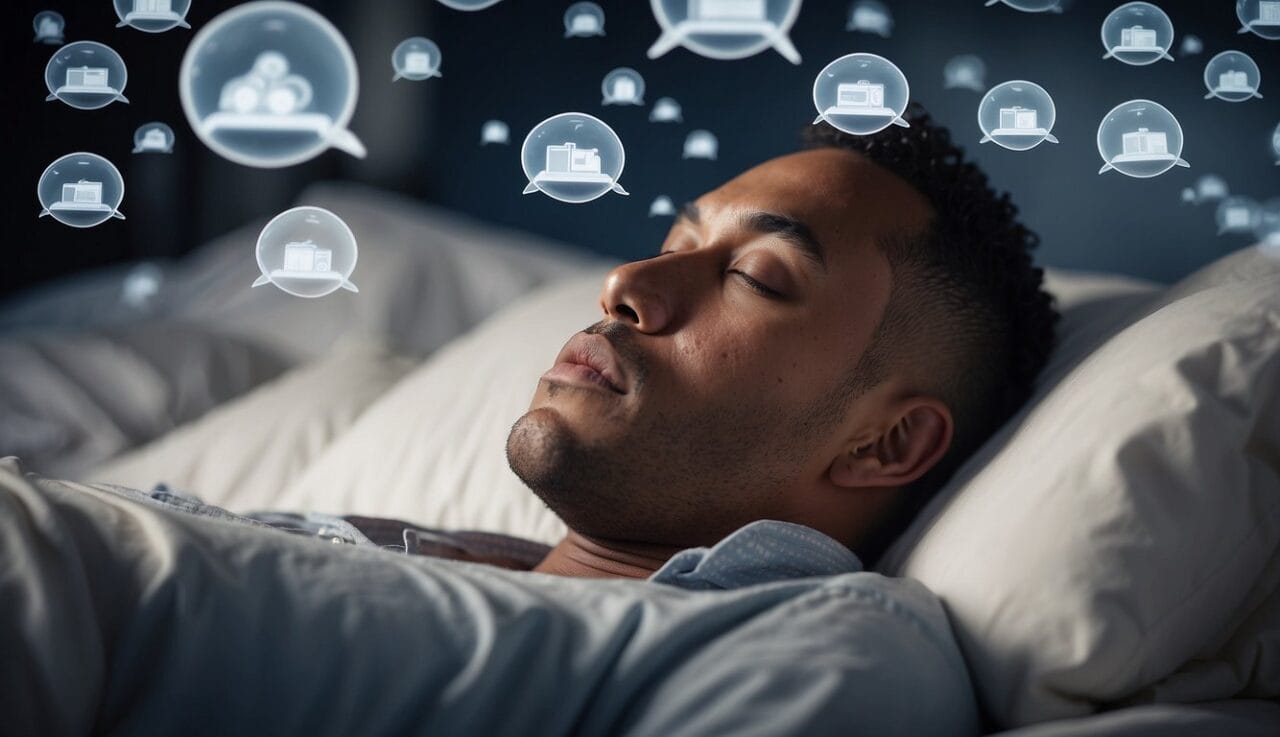When it comes to sleep apnea, there’s a lot of misinformation out there that can confuse people. This article aims to clear up some of the most common myths surrounding this condition.
Understanding what’s true and what’s not can help you make better decisions about your health.
You’ll learn about these myths and the real facts behind them, which can be eye-opening if you’ve ever wondered about sleep apnea.
Stick around to discover the truth and take control of your sleep health.
1. Sleep Apnea Only Affects Older, Overweight Men
You might think sleep apnea only happens to older, overweight men. This is not true.
Sleep apnea can affect anyone, including women and children.
People of all body types can have sleep apnea. It’s not just about weight. Even those who are fit can suffer from it.
Other factors like family history, drinking alcohol, and smoking can also increase the risk of sleep apnea. Even the shape of your airway can make a difference.
Don’t judge a book by its cover. Just because someone doesn’t fit the stereotype doesn’t mean they’re not affected by sleep apnea.
2. Snoring Always Indicates Sleep Apnea

Snoring can be a sign of sleep apnea, but it doesn’t always mean you have it. Many people snore and don’t have sleep apnea at all.
Other things can cause snoring. For example, being overweight, drinking alcohol before bed, or sleeping on your back can make you snore. These reasons are different from sleep apnea.
Sleep apnea sometimes happens without snoring. People might have pauses in their breathing during sleep without making any noise. This means you can have sleep apnea without the loud snoring that people expect.
3. Sleep Apnea is Just a Nuisance and Not a Serious Health Issue

Sleep apnea isn’t just an inconvenience; it’s a significant health risk. Ignoring it can lead to problems like high blood pressure.
You also face a higher chance of heart disease and strokes.
Living with untreated sleep apnea means struggling with daytime sleepiness. This can affect your focus and make driving dangerous.
It’s about more than just feeling tired. It could shorten your lifespan by increasing the risk of death from cardiovascular disease.
Getting treated is key. It’s not something you can just ignore.
4. CPAP Therapy is the Only Treatment Option for Sleep Apnea

Continuous Positive Airway Pressure (CPAP) is often recommended for sleep apnea. It works by keeping your airways open while you sleep. Many people believe it’s the only way to treat this condition.
Oral appliances are another option. These devices fit in your mouth and help keep your throat open. They’re less bulky than CPAP machines and can be easier to use.
Lifestyle changes can also help. Losing weight, exercising, and avoiding alcohol before bed can reduce symptoms. These changes may not cure sleep apnea but can make it more manageable.
In some cases, surgery might be needed. Procedures can remove tissue that blocks your airways or reposition your jaw. These options are usually considered when other treatments don’t work.
Choosing the right treatment depends on your specific needs. A healthcare provider can help you decide which option is best for you.
5. You Can’t Have Sleep Apnea if You Don’t Snore

Not true. Sleep apnea can occur even if you don’t snore. Some people have pauses in their breathing without making a sound.
You could have sleep apnea and never hear yourself snore. This makes it harder to notice the problem.
Always consult a doctor if you think you have sleep apnea. They can help, even if you don’t snore.
6. Sleep Apnea Only Occurs When Sleeping on Your Back
Sleep apnea isn’t just a problem for back sleepers; it can happen in any position. When you lie on your back, gravity can pull your throat tissues down, making it harder to breathe.
Sleeping on your side might lessen the symptoms, but it doesn’t eliminate the risk. You could still experience sleep apnea while sleeping on your stomach or in any other position.
Different factors like weight, age, and throat structure also play a big role. It’s not just about how you sleep; it’s about your overall health and habits. Trying different sleep positions might help, but it’s not a cure-all.
7. Surgery is the Best Long-term Solution for Sleep Apnea

Surgery might seem like a quick fix for sleep apnea, especially if you have been struggling with it for a long time. In some cases, it can be very effective, like when children have large tonsils blocking their airway.
For adults, the effectiveness of surgery can vary. Sometimes, lifestyle changes and non-invasive treatments, like Continuous Positive Airway Pressure (CPAP) machines, give better long-term results.
You should discuss with your doctor to see which option is best for you. Surgery can be a part of your treatment, but it’s not always the only or best solution.
8. Sleep Apnea Will Go Away on Its Own
Sleep apnea doesn’t just disappear without help. It’s a chronic condition that sticks around unless you do something about it.
While losing a lot of weight can make a big difference if obesity is a factor, it’s not a guaranteed fix for everyone.
Ignoring sleep apnea can lead to serious health problems over time. So it’s best to seek treatment and manage it properly.
The Science Behind Sleep Apnea
Sleep apnea is a condition where your breathing stops and starts during sleep. It affects how much oxygen your body gets, which can mess with your overall health.
Understanding Sleep Apnea

Sleep apnea happens when your airway gets blocked or collapses while you sleep. This makes it hard for air to get in and out of your lungs.
Symptoms include loud snoring, gasping for air during sleep, and waking up feeling tired.
Sleep apnea doesn’t just make you sleepy; it can also lead to serious problems like heart disease, high blood pressure, and stroke. If you think you might have sleep apnea, it’s important to talk to a doctor for proper testing and treatment.
Types of Sleep Apnea
There are three main types of sleep apnea.
Obstructive Sleep Apnea (OSA) is the most common type. In OSA, your throat muscles relax too much, which blocks your airway.
Central Sleep Apnea (CSA) is less common and happens because your brain doesn’t send the right signals to the muscles that control your breathing.
Complex Sleep Apnea Syndrome, also called treatment-emergent central sleep apnea, is a mix of both OSA and CSA.
Each type needs different treatments.
Common treatments include lifestyle changes, breathing devices like CPAP (Continuous Positive Airway Pressure), and sometimes surgery.
The right treatment can help you sleep better and avoid serious health problems.

